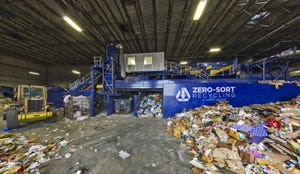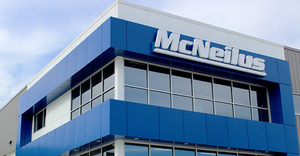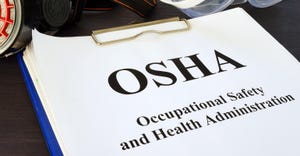Bioreactor Technology Tops Agendas
December 1, 2000
Jenny Heumann
Environmental foundation and EIA are teaching and researching the latest in bioreactor technology.
The Environmental Industry Associations (EIA) and the Environmental Research and Education Foundation, both Washington, D.C.-based, are exploring bioreator landfill technology in depth.
EIA will examine bioreactor landfills and air emissions at its annual landfill conference, Waste Tech 2001, being held in San Diego, Calif., on Feb., 11-14, 2001.
The Environmental Research and Education Foundation and Michigan State University, Lansing, Mich., will conduct a bioreactor landfill project after President Clinton recently signed an appropriations measure containing an amendment that provides $500,000 for the venture.
Sessions at the three-day Waste Tech conference will take a historical look at bioreactor landfill technology and ways to build on past discoveries to make the technology a viable option for future landfill facilities.
"A whole generation of engineers has been using bioreactor landfill technology in facility applications," says Ed Repa, director of environmental programs for EIA. "One of the sessions is titled: `Let's Not Reinvent the Wheel.' We want to take a look at what's been done in the past and also look at the technology that's being used currently."
A bioreactor landfill differs from a standard Subtitle D landfill in that its process actively manages waste degradation in a landfill. The organic content of the bioreactor landfill decomposes at a faster rate because additional liquids and oxygen are added to the landfill.
"Basically, you're turning the landfill into a giant compost heap," Repa says.
A few benefits of bioreactor landfills include a shorter time period in which gas emissions and leachate are generated. Also, quicker waste decomposition means a shorter post-closure period due to waste decomposing faster.
A traditional "dry tomb" landfill, can be biologically active for hundreds of years, producing air and water emissions that must be monitored, controlled and treated for years.
The bioreactor landfill has a longer life than a dry-tomb landfill due to the increased waste handling capacity that results from the materials decomposing at a faster rate. Additionally, the post-closure process is quicker, and the landfill site can be more efficiently returned to productive use after the landfill is closed.
Current landfill regulations, as written under Subtitle D, do not allow for the bioreactor landfill process to have widespread use, according to Repa.
"[We] don't add water to landfills because of fear of groundwater contamination," he says. "In regards to landfill management, Subtitle D says, isolate the waste and let it sit. The bioreactor landfill process is an active management process."
The secondary focus of the conference will be air emissions standards. Two sessions on the second day of the conference will address contents of landfill emissions and how landfill managers can control and use these emissions.
The final day of the conference will be a landfill facility tour held the morning of Feb. 14, 2001.
There still are sponsorship opportunities available for the breakfasts, coffee breaks, lunch and welcome reception, as well as transportation to the golf tournament and facility tour.
To attend the Waste Tech 2000, or for sponsorship information, call toll-free (800) 424-2869.
The Environmental Research and Education Foundation's proposed bioreactor landfill project will compare waste in a municipal solid waste (MSW) landfill to waste disposed in an aerobic landfill and anaerobic bioreactor landfill.
"The information we obtain will help the industry as a whole make better use of landfill technology," Repa says.
The project involves the construction of two test cells (anaerobic and aerobic) at an existing MSW landfill. The bioreactor cells and traditional landfill will be monitored monthly for environmental releases and compaction. Researchers will collect and analyze leachate and gas samples. Also, the project will measure waste compaction through settlement.
In addition, the Foundation and its partners will track the amount of liquids and air injected into the aerobic cells.
"We want to know all of the inputs and outputs in the landfill, otherwise we can't make any determination on how the technology is working," Repa says.
For more information on the Foundation's project, call Ed Repa toll-free at (800) 424-2869 or e-mail him at [email protected].
You May Also Like


